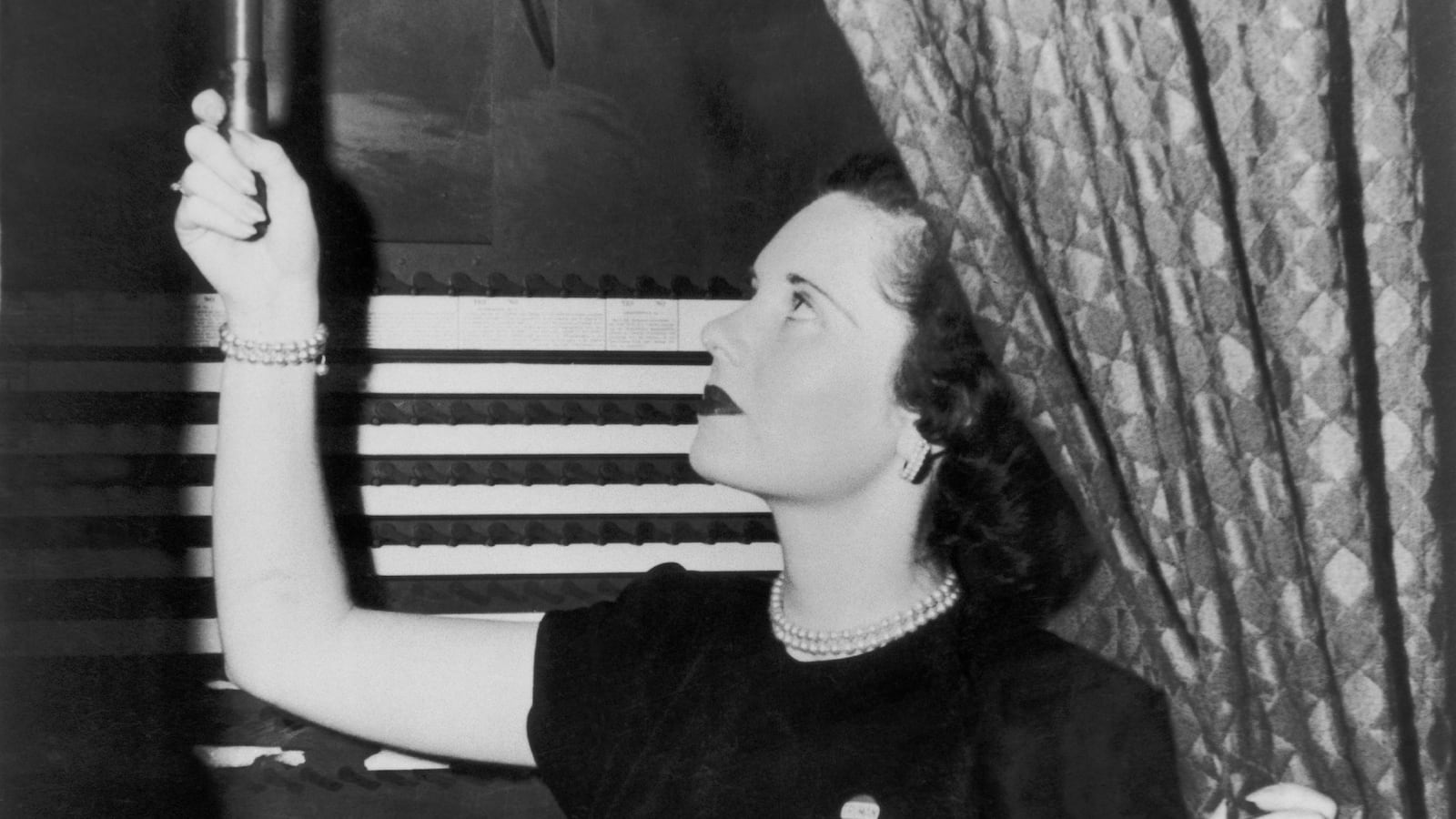
On Tuesday, for the first time since the 1920s, not a single vote was cast for president in America by pulling a lever.
The beloved metal-lever voting machines rung up their last tallies in this country in New York state during the 2010 midterm elections. After Florida’s ballot-casting debacle in 2000, the federal Help America Vote Act of 2002 mandated that all in-person voting would have to be done electronically to avoid the chaos of hanging chads and butterfly ballots.
But where did the hulking 875-pound machines end up?
Lever devotees, brace yourselves: many of the machines were taken out to sea and then sunk to create artificial reefs to protect coastlines.
“Now the fish are voting with them,” says Kimball Brace, president of Election Data Services and an expert on the history of voting in America.
The machine was developed in 1895 by Republic Steel of Ohio, says Ransom Shoup, a descendant of Samuel Shoup, the inventor of the lever voting machine, and the former president of Shoup Voting Solutions. “At one point,” says Shoup, “there were 8,000 machines in New York’s five boroughs. There were machines in 41 states.”
But no longer.
The lever machines that weren’t deposited into the ocean have been scrapped for metal, some have been sold on eBay, and a lucky few have been preserved for historical purposes. “We still have one in our office,” admits Shoup. At least one is on display at the State Museum in Albany, according to the New York State Board of Elections. In New York state, a few stragglers are in service for local school, library, and municipal elections.
But the lever fans say the machines were efficient and effective—and that their fatal flaw was the weight. “It’s much easier to haul a bunch of punch cards around,” says Brace. “The old levers are so difficult to move, you don’t necessarily want one in your house.”
“If one fell over, it was just finished,” says William Bird, a curator at the Smithsonian Institution who put together a recent exhibition on voting in America. “It’s kind of like moving a piano when you could move a synthesizer instead.” But “at least they couldn’t be stolen,” he adds.
Still, “it was probably the best machine the country ever made,” says Shoup. “The machines just lasted and lasted. They could still be on the market today. They just don’t wear out.”
Anyone bewildered by today’s screens of buttons and lights in a darkened booth may be understandably nostalgic for the old methods of charting representative democracy. Voting booths that date back to the 19th century can be found on eBay—for about $1,000.
The National Voting Rights Museum and Institution in Selma, Ala., has some of the first voting booths used in the South. “They were stored in warehouses for years by the county commissioners,” says Sam Walker, a historian at the museum. “We negotiated to get them here. We have the first voting booths used by black people to vote.”
For the more contemporary voting-booth collector, the now-infamous voting machines used in Florida 2000 ended up for sale on eBay for a more modest $55.
There is little dispute that the machines that produced hanging chads are out of a commission for a good reason, but the lever machine is still being mourned for its tactile sensation of casting a vote.
“You really felt as if you were doing something when you used them,” says Bird. “You could hear the clicking in the back and when you opened it, it had a thud to it.”
After the last machines were phased out in New York, commenters on a New York Times article eulogized the departing lever machine.
“The thunk of each lever was as satisfying as closing the door of a vintage Mercedes,” wrote one.
“Pulling that lever gives me a very satisfying feeling when casting my vote. I do not believe a touchscreen type voting machine will give me that ‘umph,’” wrote another.
One particularly creative lever fan even penned a poem for the machine: “I like the little levers/ They work without a hitch/Like little eager beavers/I’m reluctant to switch.”






